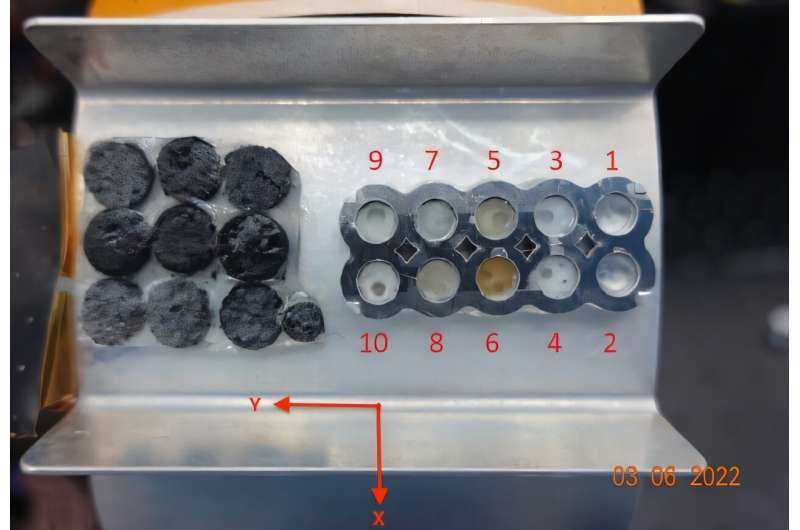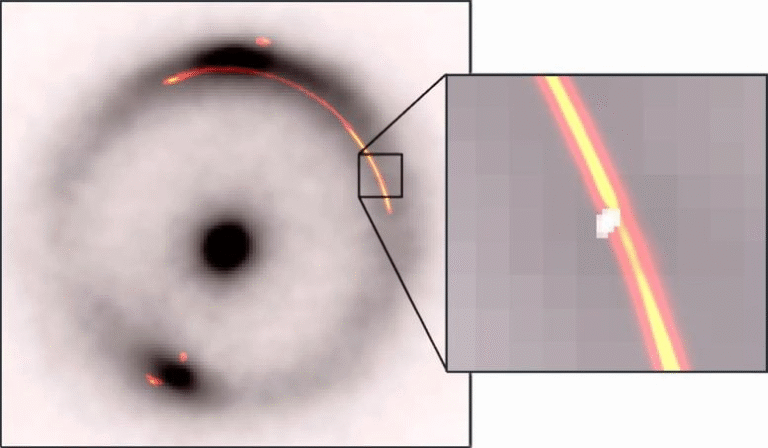Taking the Moon’s Temperature With Beeswax and What We Can Learn From a Failed Lunar Mission

The idea of taking the Moon’s temperature using beeswax sounds almost whimsical, but it comes straight from a real scientific experiment created at MIT and flown on the United Arab Emirates’ Rashid-1 lunar rover. Even though the rover never made it to the lunar surface intact, the mission left behind a wealth of engineering insight — and two small passive sensors that demonstrate how creative scientists can get when trying to understand another world.
This article walks through every detail of the experiment, what the sensors were meant to do, what went wrong with the mission, and why publishing results from a failure can still push space exploration forward. After that, you’ll find a section with extra information about lunar temperature extremes and why measuring them is difficult.
The Rashid-1 Rover and Its Unexpected End
The Rashid-1 rover was built by the Mohammed bin Rashid Space Center (MBRSC) in the UAE as part of the Emirates Lunar Mission. It weighed about 10 kg, making it a compact and lightweight robotic explorer. Rashid-1 flew aboard Hakuto-R Mission 1, a commercial lander built by the Japanese startup iSpace, launched in December 2022 using a low-energy trajectory to save fuel.
Unfortunately, the mission ended abruptly. While approaching its intended landing site, the lander misinterpreted its altitude. Its navigation system mistakenly believed it had already touched the surface while it was still about 5 km above the Moon. Because of this incorrect reading, the engines shut off too early, and the lander performed a hard landing. As a result, Rashid-1 never operated on the Moon as planned.
Still, before launch, engineers had developed two unique experiments that were mounted on the rover’s wheels. These sensors were part of a larger plan known as the Material Adhesion/Abrasion Detection (MAD) experiment. Both sensors were designed to work entirely passively — needing no power, no electronics, and no moving parts. Instead, they relied on simple physics and the rover’s onboard camera.
The Passive Regolith Sampler (PRS)
The first of the two sensors was the Passive Regolith Sampler (PRS). Its design was straightforward but clever. The device consisted of an aluminum tray sealed under a plate full of perforated holes. These holes varied in size, shape, and orientation. Rashid-1 carried two PRS units, one mounted on each of its front wheels.
The idea was simple: as the rover’s wheels rolled across the lunar surface, tiny grains of regolith (lunar soil) would fall through the holes and collect inside the tray. By examining which holes allowed the most particles to pass through and which best retained the samples, researchers hoped to understand how hole geometry affects passive soil collection.
This type of passive sampling matters because future rovers could use similar devices to gather scientific material without needing motors or complex mechanisms — ideal for missions with strict mass and power constraints.
Testing the PRS on Earth
Before launch, the MIT team tested the PRS using lunar regolith simulant. However, they quickly discovered that manually pressing the device into the soil wasn’t a good substitute for a real wheel rolling over it. They couldn’t find statistically useful differences between hole types, so they suspected the testing method was flawed.
After the mission failed, the team gained access to the MBRSC’s testing sandbox, where they attached the PRS to an engineering model of the rover and performed proper wheel-based tests. Those results weren’t ready at the time the research paper was published, but the experiments are expected to shed light on how effective the passive sampling approach can be.
The Passive Wax Thermometer (PWT)
The second sensor — the Passive Wax Thermometer (PWT) — is the one that captured the most attention. It used small capsules of different waxes, each with its own specific melting point. These waxes were selected because they behave in a very helpful way:
- When solid, they look opaque.
- When liquid, they turn clear.
With the rover’s camera observing these capsules, engineers could determine whether each wax had melted at any given moment. Since each wax melts at a known temperature, the PWT would act as a binary temperature indicator. If a wax melted, the environment was above its melting temperature; if not, it was below.
Temperature Range and Wax Choices
The wax capsules covered a temperature range from 9°C to 87.5°C:
- Pentadecane melted at roughly 9°C.
- Tetratetracontane melted at about 87.5°C.
- Additional capsules included two types of natural beeswax and one commercial candle wax.
The inclusion of beeswax helped researchers test real-world, sustainable, and easily accessible materials. Beeswax also has complex melting behavior influenced by its composition, making it an interesting comparison point.
Lost Opportunity During Lunar Eclipse
The experiment could have captured an especially dramatic moment: a lunar eclipse was scheduled to occur during the rover’s mission timeline. A lunar eclipse causes a rapid drop in surface temperature, which would have provided excellent thermal-response data for the wax capsules.
But because the rover never reached operational status, this opportunity was lost.
Even so, documenting the design and methodology ensures future missions can try similar passive-temperature experiments.
Why Publish Results After a Failed Mission?
The MIT Space Enabled Research Group emphasized that sharing these findings is crucial, even though the rover never operated on the Moon. Space missions fail often, and each failure contains lessons that can help improve future designs.
By openly publishing:
- sensor designs,
- test data,
- algorithms,
- image-processing methods, and
- lookup tables needed to interpret the shadows and lighting conditions,
the team allows other researchers to adapt or improve upon these passive methods for later lunar or planetary missions.
This transparency ensures the work doesn’t disappear just because the rover didn’t survive landing.
Extra Insight: How Hot and Cold Does the Moon Get?
Understanding lunar temperatures helps explain why experiments like the PWT matter.
The Moon’s Temperature Extremes
- Daytime temperatures near the equator can climb to around 120°C.
- Nighttime temperatures can plunge below –170°C.
- There is no atmosphere to moderate heat or distribute temperature evenly.
- Certain areas, such as permanently shadowed craters, can remain below –200°C.
These extremes require sturdy equipment and materials that can tolerate rapid thermal swings. Passive thermometers might not capture the full range, but they can offer localized temperature data with very little mass or power cost.
Why It’s Hard to Measure Temperature on the Moon
Measuring temperature isn’t as simple as pointing a thermometer. Issues include:
- harsh lighting with sharp shadows,
- extreme contrast between sunlit and shaded regions,
- dust that can accumulate and insulate surfaces,
- rapid temperature changes during sunrise or sunset.
Passive systems eliminate many failure points, making them appealing for small rovers.
The Significance of Simple, Passive Space Instruments
The PRS and PWT are examples of what engineers can accomplish with minimal power budgets. In an era where many new lunar missions come from emerging space nations or private startups, such small, low-cost, and highly reliable designs can make lunar science more accessible.
Even though Rashid-1 never completed its mission, the ideas behind these sensors will very likely appear again — refined, improved, and sent to new worlds.
Research Paper:
The Passive Regolith Sampler: From Concept to Delivery to the Lunar Surface
https://doi.org/10.1007/s11214-025-01217-y





